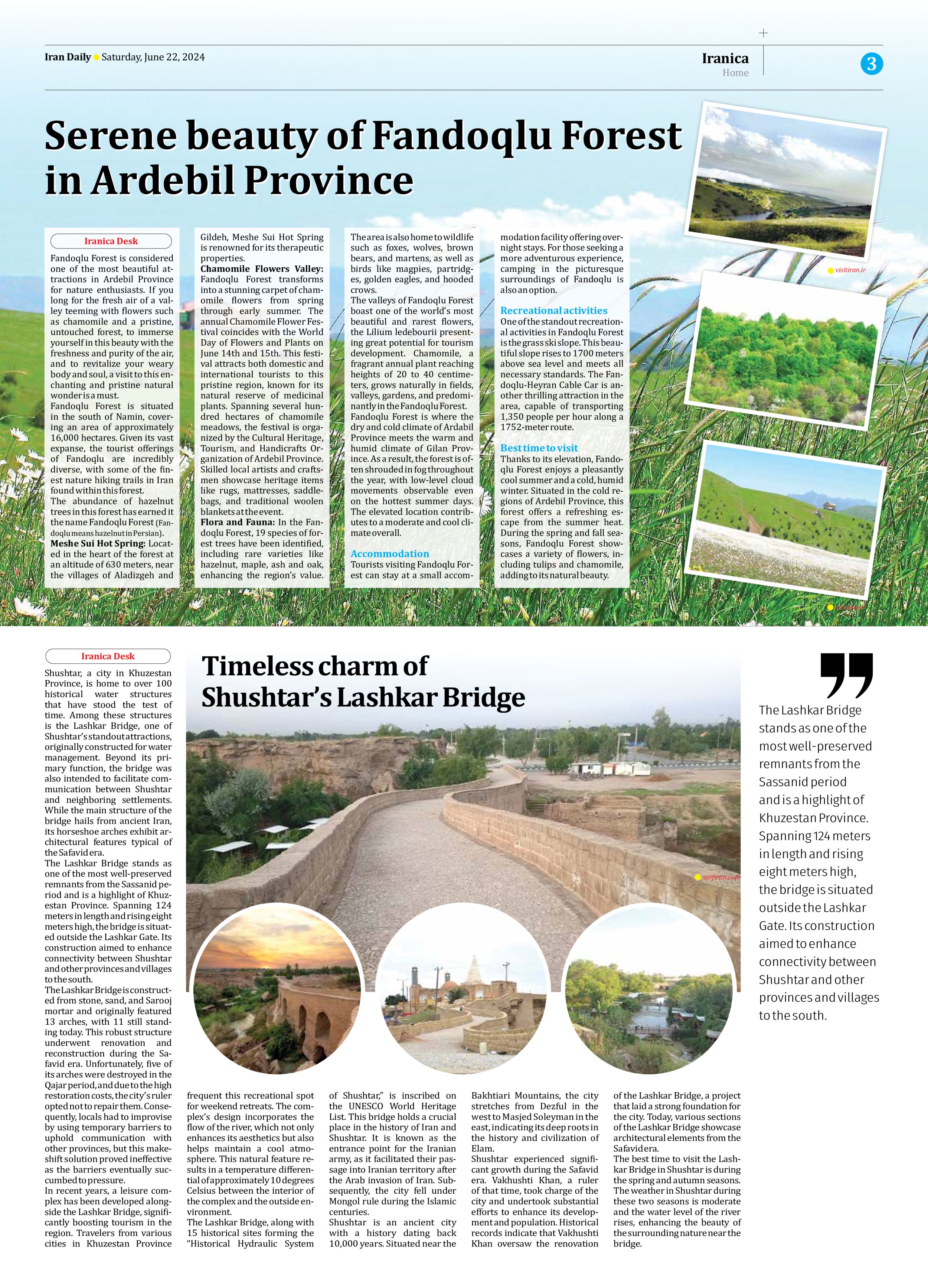
Timeless charm of Shushtar’s Lashkar Bridge
Shushtar, a city in Khuzestan Province, is home to over 100 historical water structures that have stood the test of time. Among these structures is the Lashkar Bridge, one of Shushtar’s standout attractions, originally constructed for water management. Beyond its primary function, the bridge was also intended to facilitate communication between Shushtar and neighboring settlements. While the main structure of the bridge hails from ancient Iran, its horseshoe arches exhibit architectural features typical of the Safavid era.
The Lashkar Bridge stands as one of the most well-preserved remnants from the Sassanid period and is a highlight of Khuzestan Province. Spanning 124 meters in length and rising eight meters high, the bridge is situated outside the Lashkar Gate. Its construction aimed to enhance connectivity between Shushtar and other provinces and villages to the south.
The Lashkar Bridge is constructed from stone, sand, and Sarooj mortar and originally featured 13 arches, with 11 still standing today. This robust structure underwent renovation and reconstruction during the Safavid era. Unfortunately, five of its arches were destroyed in the Qajar period, and due to the high restoration costs, the city’s ruler opted not to repair them. Consequently, locals had to improvise by using temporary barriers to uphold communication with other provinces, but this makeshift solution proved ineffective as the barriers eventually succumbed to pressure.
In recent years, a leisure complex has been developed alongside the Lashkar Bridge, significantly boosting tourism in the region. Travelers from various cities in Khuzestan Province frequent this recreational spot for weekend retreats. The complex’s design incorporates the flow of the river, which not only enhances its aesthetics but also helps maintain a cool atmosphere. This natural feature results in a temperature differential of approximately 10 degrees Celsius between the interior of the complex and the outside environment.
The Lashkar Bridge, along with 15 historical sites forming the “Historical Hydraulic System of Shushtar,” is inscribed on the UNESCO World Heritage List. This bridge holds a crucial place in the history of Iran and Shushtar. It is known as the entrance point for the Iranian army, as it facilitated their passage into Iranian territory after the Arab invasion of Iran. Subsequently, the city fell under Mongol rule during the Islamic centuries.
Shushtar is an ancient city with a history dating back 10,000 years. Situated near the Bakhtiari Mountains, the city stretches from Dezful in the west to Masjed Soleyman in the east, indicating its deep roots in the history and civilization of Elam.
Shushtar experienced significant growth during the Safavid era. Vakhushti Khan, a ruler of that time, took charge of the city and undertook substantial efforts to enhance its development and population. Historical records indicate that Vakhushti Khan oversaw the renovation of the Lashkar Bridge, a project that laid a strong foundation for the city. Today, various sections of the Lashkar Bridge showcase architectural elements from the Safavid era.
The best time to visit the Lashkar Bridge in Shushtar is during the spring and autumn seasons. The weather in Shushtar during these two seasons is moderate and the water level of the river rises, enhancing the beauty of the surrounding nature near the bridge.







